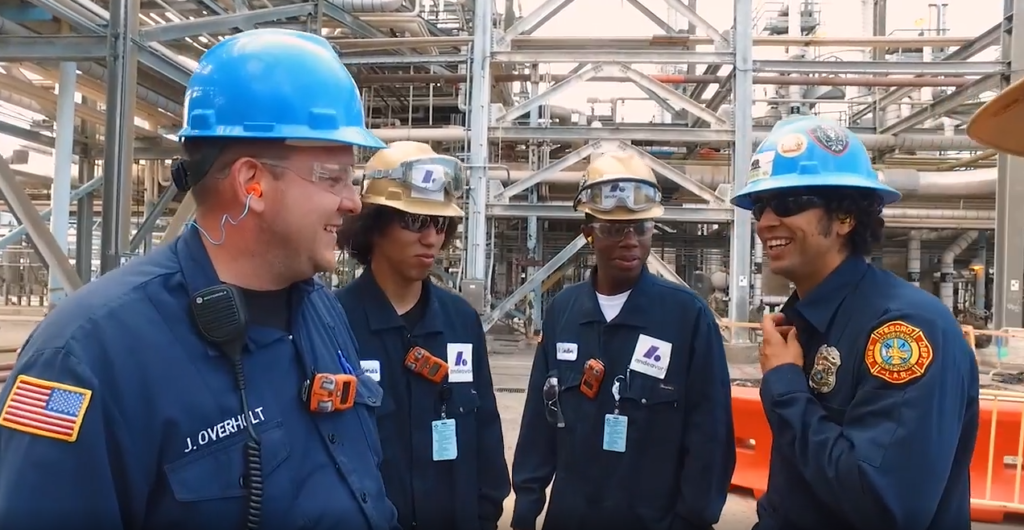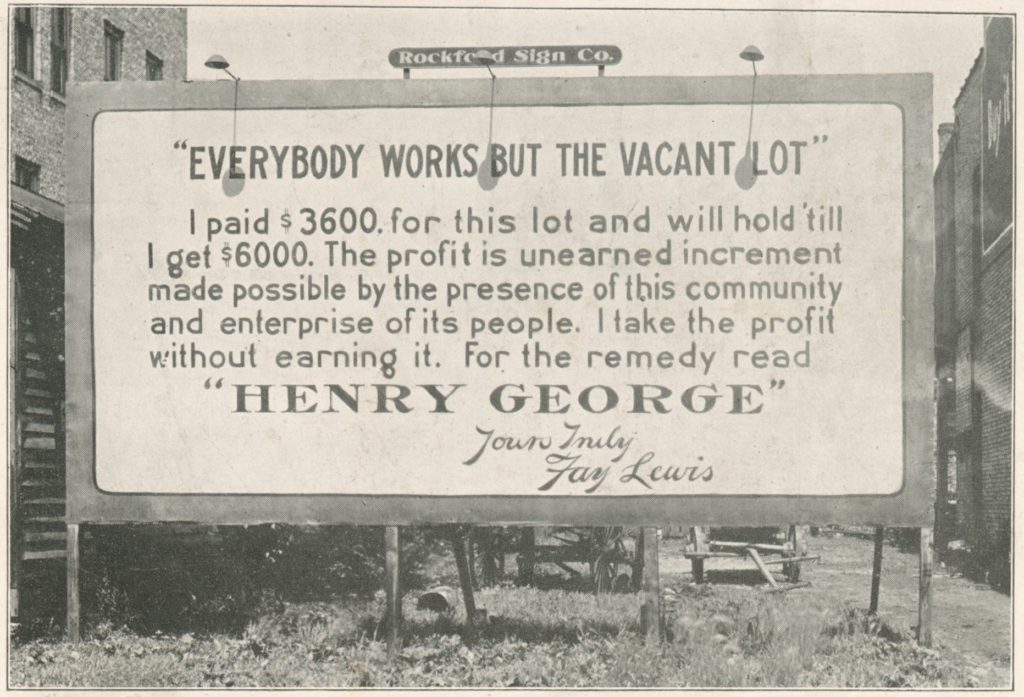Long Beach is Addicted to Fossil Fuel Money: Schools
The Long Beach Unified School District has received over $600,000 in donations since 2014 from an oil refinery that pollutes the air over some of its campuses.
7 minute readThe entrenchment of the fossil fuel industry in the economic and political life of Long Beach goes back over a hundred years to when the first oil gusher streaked the sky above Signal Hill in 1921. In many ways, oil money made Long Beach what it is today, vaulting what was then a seaside town of 55,000 into a formidable metropolis of half a million that has become a critical node in the global supply chain and fossil fuel market.
With hundreds of active oil wells, a natural gas-fired power plant, and a coal-export terminal, the fossil fuel industry—a century later—continues to have a heavy political and financial presence in Long Beach. But as public awareness has grown around climate change and the public health dangers tied to oil and gas extraction, so too has the scrutiny around taking money from an industry that, perhaps more than any other, threatens both the immediate and long-term wellbeing of the human species.
Currently, atmospheric levels of carbon dioxide, the most prevalent greenhouse gas, are at the highest levels ever recorded. According to the most recent assessment report from the Intergovernmental Panel on Climate Change (IPCC), carbon extraction and burning is largely responsible for the conditions causing climate change, the effects of which are already occurring in the form of deadly heat waves, extreme hurricanes, sea-level rise that is swallowing island nations, and the growing crisis of climate refugees. The IPCC estimates that global emissions would need to drop sharply in the next decade and reach net zero by around 2050 to limit these dire consequences.
Locally, scientists warn that Long Beach, with about six miles of coastline, could lose coastal communities to climate-induced flooding, with some models showing high tide eventually reaching the 405 Freeway.
Despite the sleepwalk toward climate catastrophe and the cancerous pollution spewed by oil and gas operations each day, the city’s institutions remain awash in fossil fuel money, from its public schools and library system to its police and fire departments to its nonprofits and political campaigns. Long Beach itself owns fossil fuel extraction sites and is the only city in the state to fund vital services and infrastructure with oil and gas revenue.
The influence exerted by the millions of dollars flowing to these institutions from the deep-pocketed petroleum industry—whether in the form of philanthropy, political contributions, or tax revenue—has both global and local implications. And until now, this vast network of petroleum dollars and its financial stranglehold on Long Beach has gone largely unexamined.
In the first part of this series, we’ll look at the longstanding financial relationship between a local oil refinery and the Long Beach Unified School District (LBUSD) and how it has affected students’ ability to advocate for environmental justice and created a pipeline between schools and the petroleum industry. Future installments will delve into the financial relationship between the fossil fuel industry and other local institutions, including nonprofits, the police department, and political campaigns.
‘HUSH MONEY’
When Long Beach student Diego Mayens stepped up to make a public comment during a community meeting held by the regional air quality board at the Wilmington Senior Center in 2018, the last thing he expected was to get in trouble at school.
Mayens, then a senior at Cabrillo High School, had come to a public input meeting put on by staff of the South Coast Air Quality Management District (SCAQMD) with a handful of fellow students and environmentalists to address air pollution in his West Long Beach neighborhood.
“As students of color that have faced environmental racism, we’ve grown up all our lives knowing that the air quality is bad,” Mayens said in a recent interview. “We weren’t really bad-mouthing anyone. We were just kind of sharing our experience around it and we wanted enforcement around the refinery polluting too much.”
The refinery Mayens refers to has sites located in Carson and Wilmington, which merged in 2017 to create the largest oil refinery on the West Coast. For many years the refinery was operated by Tesoro, which briefly rebranded as Andeavor in 2017 before being bought out by its current operator Marathon Petroleum. The Wilmington site is less than a mile west of Cabrillo High.
Ohio-based Marathon is one of the country’s biggest industrial polluters, ranking in the worst 20 for air, water, and greenhouse gas pollution, according to the Toxic 100 Indexes from the University of Massachusetts Amherst’s Political Economy Research Institute.
A recent report from ProPublica showed that air pollution from a cluster of refineries in Carson and Wilmington elevated the cancer risk in the adjacent West Long Beach neighborhood around Cabrillo High, though the hazard falls within the Environmental Protection Agency’s “acceptable risk.” And although Marathon has said that it has cut harmful emissions by 35% in the last decade, refinery-adjacent communities continue to suffer from respiratory issues.
The area also has some of the highest asthma rates in the state, according to data compiled by the California Office of Environmental Health Hazard Assessment. A landmark study by the University of Southern California in 2015 linked high levels of air pollution to developmental problems in the lungs of school-aged children. The effects of this can lead to lifelong impairments that translate to missed school and work days, ultimately leading to a lower quality of life.
Life expectancy is generally lower in industry-heavy West Long Beach than in other parts of the city. For example, those living in the 90813 zip code can expect to live on average up to eight years less than residents living in the eastern part of the city, where the majority white population breathes cleaner air, according to a report from the Long Beach Health and Human Services Department published in 2019.
“Some of my friends have asthma. I used to get nosebleeds and headaches from the air pollution. So we know a lot about how the refinery impacts us,” Mayens said. “The actual public comment portion [of the SCAQMD meeting] went fine. It wasn’t until the next day that it got complicated for the students involved.”
When they returned to school, Mayens said that Kenneth Fisher, the lead teacher for Cabrillo High’s Engineering and Design program, confronted the group, and in some cases pulled students aside one-by-one to question them about their public comments at the SCAQMD meeting.
Mayens says Fisher spoke to him individually and told him he was concerned that the students’ testimony could hurt the school’s financial relationship with the refinery.
“The teacher was kind of angry because I guess it jeopardized the funding that Andeavor was giving to the [engineering] program,” said Mayens, adding that Fisher asked each of the students to write down what they had said at the meeting for submission to Andeavor representatives. “I was, like, in high school and I didn’t want to create a lot of trouble. So I wrote down what I had said at the meeting. And then I signed it and I gave it to him.”
Fisher disputes these allegations, saying he never admonished the students for their activism and only advised them against spreading “fabricated stories,” which he said some members of the public had done during the meeting.
“I do not recall ever scolding any students for speaking out against air pollution. I am an activist myself, especially in fighting for clean air here on the west side of Long Beach,” Fisher, who has taught at the school for over 20 years, wrote in an email.
However, two other former students from the group we contacted corroborated Mayens’ version of the events, saying they too were confronted by Fisher for their comments. Fisher did not respond to an email with follow-up questions.
“[Fisher] had stated representatives of the Andeavor refinery were very upset with us and could cut the funding for his program,” said Cristhian Tapia, who had gone to the SCAQMD meeting as part of Youth in Action, a campus club focused on environmental justice. He graduated from Cabrillo High in 2018.
Tapia said school officials went so far as to warn students that Andeavor could take legal action against them for the comments they had made at the public meeting.
“I was one of the members who refused to write down a written and signed statement for Andeavor representatives as what I talked about was not ‘slander’ [but] only my own living experiences,” he said.
In the last eight years, the LBUSD Board of Education has accepted over $600,000 in grants from Marathon Petroleum and its predecessor companies, most frequently through a charitable foundation run by these businesses, according to LBUSD financial records. The money has gone toward a variety of school purchases and programs, such as an industrial washer and dryer for Cabrillo High in 2019 and laptops for students at Jordan High in 2017.
During that span, Cabrillo High’s engineering and robotics programs received at least $90,000 in funding from the multi-billion-dollar petroleum giant next door, the records show.
“My funding I have received for our engineering pathway is to help students learn more about data collection, mathematics, and the environment and the impact that students can make in water sustainability, air quality and other environmental issues all while getting a great education so that they can get their college degrees and keep fighting with a stronger platform,” Fisher wrote in his email.
However, Mayens says school officials approving these donations should be aware that the funding isn’t simply a generous charitable contribution, but has a much more insidious ulterior motive, one that he says keeps his community pinned upon the altar of economic gain.
“There was always talk about refineries giving hush money to certain neighborhoods and programs. And I had never really seen it. But that's when it really hit me that the refinery was trying to pay off as many people as they can to make sure they can continue to pollute and profit,” said Mayens.
Marathon Petroleum did not respond to our media inquiry.
Beyond donations from Marathon and its predecessors, LBUSD has taken donations from other fossil fuel companies such as Chevron, which donated $10,000 in 2020 to the California Academy of Math and Science “for the benefit of the students and staff.” In addition, the Long Beach Education Foundation, set up to raise funds for the school district, has also received donations from fossil fuel companies that operate locally, including the California Resources Corporation (CRC) and Andeavor, which Marathon acquired in 2018.
Tapia said teachers and school administrators who didn’t live in West Long Beach were often dismissive of the passion and urgency of student-activists who had grown up seeing the health consequences of breathing dirty air both in themselves and in their loved ones.
“One of the arguments made by the adults on campus was that this [fossil fuel industry] money allows students a better shot to get out of the Westside, but what about their families and friends who aren't as fortunate?” Tapia said. “I think taking the money is the easy solution but it ignores the lives of those who are not as privileged enough to just leave.”
Two ports, five refineries, nine railyards, a trash incinerator, hundreds of oil extraction sites, and over 40 miles of surrounding freeways all contribute to the pall of pollution over the 48-square miles that make up Wilmington, West Long Beach, and Carson, where about 261,000 people reside. People of color make up about 90% of that population, most of them Latinos.
While there have been improvements to the overall air quality of the region in the last few decades, fine particle pollution causes an estimated 7,200 premature deaths annually across the state, according to the California Air Resources Board. Air regulators say refineries are the biggest stationary sources of fine particle pollution and volatile organic compounds in the industry-heavy port communities. The neighborhoods along the 710 freeway corridor—which moves nearly 40% of the nation’s container cargo—continue to rank among the most polluted in the entire state and have one of the Southland’s highest cancer risks. The passage and its surrounding neighborhoods have earned the bleak nickname “Diesel Death Zone.”
The Long Beach Unified School District did not reply to a request for comment. LBUSD Board of Education member Erik Miller, who represents Area Two where Cabrillo High is located, also did not reply to questions sent via email.
Miller has deep professional ties to the refinery. Prior to being elected to the school board, he graduated from the Tesoro Foundation Emerging Leaders program in 2016, according to postings on social media. The seminar was funded by Tesoro and run by the Long Beach Nonprofit Partnership.
Currently, he is the executive director for the Long Beach branch of the United States Veterans Initiative, a nonprofit that provides housing and other services to homeless and at-risk veterans. Annually, since at least 2015, the refinery’s foundation has donated $25,000 to the organization, according to tax documents and public announcements.
Nadia Y. Kim, a professor of sociology at Loyola Marymount University, says that the same political and economic systems that enable and benefit from the polluting activities of the fossil fuel industry also create the service gaps that the industry exploits with its strings-attached philanthropy.
“[Fossil fuel companies] are able to take advantage of the fact that schools are underfunded,” she said. “They don't even have to tell the principal or the teachers to silence anyone who criticizes Marathon or Valero or Shell or BP. They don't even have to say that because the schools know based on where the money's coming from that they have to silence the students who organize on campus.”
Tomisin Oluwole
Fragmented Reflection I, 2021
Acrylic on canvas panel
24 x 30 inches
Click here to check out our interview with Tomisin Oluwole, a literary and visual artist based in Long Beach.

Instead of gunking up our site with ads, we use this space to display and promote the work of local artists.
According to Kim, who spent years documenting the struggles and resilience of environmental justice activists in the port-industrial belt for her book Refusing Death: Immigrant Women and the Fight for Environmental Justice in LA, accepting fossil fuel donations sets up a false choice within institutions between using those funds to provide vital resources and the public health of their communities.
“Why are schools even in need of funds? Why is that even the situation that we're in right now?” she said. “It doesn’t have to be that way. That's a false neoliberal choice. If we were a society that was more focused on egalitarianism and the collective sharing of resources and funding, they wouldn't have to make that false choice.”
FOSSIL FUEL’S BIG BET ON STEM EDUCATION
The need for more education funding is apparent to Diana Michaelson, a junior at Long Beach Polytechnic High School and a member of the Long Beach Green Schools Campaign, a youth-led movement to get LBUSD to transition to renewable energy. Still, she says, taking fossil fuel money is not the answer.
“I have a couple classes that have 40-plus kids and one teacher to manage them. I can understand that any and all money is extremely useful, but at the end of the day, it’s greenwashing,” said Michaelson. “By having [fossil fuel companies] pitch in to these programs and essentially fund these educational campaigns, they get to kind of decide the curriculum and convince us that putting our trust in these companies will be okay when in reality it's not.”
In 1998, an eight-page memo outlining the industry’s public relations plan to thwart greenhouse gas regulations leaked. The document stated that “victory will be achieved when … average citizens ‘understand’ (recognize) uncertainties in climate change science; recognition of uncertainties become part of ‘conventional wisdom.’” Part of this plan was the creation of a national outreach and educational campaign to convince the media, politicians, teachers, and students of their position.
Funding school programs, especially STEM education, often leads to the creation of a pipeline between public schools and the fossil fuel industry, which offers lucrative—but oftentimes grueling and dangerous—work where annual pay can easily fetch six figures.
One example is the Summer Youth Program—previously run by Tesoro before Marathon took it over. Since 1992, it’s been offered at schools throughout the port-industrial region, including Cabrillo High, and pays students $16.50 an hour over the course of seven weeks to shadow and work alongside the refinery’s crew. The program “offers a combination of classroom training on various aspects of the refinery and hands-on experience working at different job sites with other experienced refinery and business unit staff members,” according to a flier for the program.

Last year, Brad Levi, a Marathon executive, told the Los Angeles Business Journal that participants in the program are usually hired on as employees or contractors.
However, these types of programs have a heavy pro-industry bent, glossing over fossil fuel’s role in climate change and the pollution that pervades the very communities from which its participants are plucked.
A newsletter put out by Marathon says students who took part in this program in 2019 attended a SCAQMD meeting where the refinery’s regulatory affairs manager “discussed the emission reduction plan and the precautions the company is taking for its community.”
One participant quoted in the newsletter said, “Getting the privilege to wear the Marathon logo to the meetings and community events is an honor … To be able to teach other people new things and why it is so important in the community to have a refinery is the best thing I can do.”
Wendy Miranda, a student at Banning High School in Wilmington, said school programs that put students on track for a refinery career are attractive opportunities for many students because high-paying jobs are scarce in her community.
“They would have a lot of field trips to go to the refineries. And even dinners where there's people from the industry. And students are able to network,” said Miranda, who is also an intern for Communities for a Better Environment, a statewide environmental justice organization. “They’ll pay for graduation sashes. We're a predominantly low-income community. We don't have the funds to pay for things like that. So that's really what attracted students to those types of programs.”
Each year, Cabrillo High invites a representative from Marathon to speak to students during its Women in STEAM luncheon. The event takes place during International Women’s Day and is meant to encourage girls at the school to seek careers in the male-dominated fields of science and engineering.
While these meet-and-greets are sold as empowering experiences to impressionable school-aged girls, what they aren’t told is that the activities of the fossil fuel industry have a long history of disproportionately endangering the health and safety of women.
Pollution from fossil fuel activity has been linked to higher rates of breast cancer, ovarian diseases, and risks to women’s pregnancies, according to a report from the Women’s Earth and Climate Action Network.
“Biologically, female bodies experience higher accumulation of inhaled particles in their lungs and are more sensitive to toxicological exposure,” the report states. “Moreover, air pollutants from fossil fuel combustion can result in adverse reproductive outcomes, such as stillbirth, fetal growth restriction, and birth defects.”
Women are also impacted by air pollution through the additional burden the fossil fuel extraction industry imposes on women as caretakers when family members come down with pollution-related illnesses, the report says.
Recruiting students not only helps replenish the petroleum industry’s aging workforce, but it also increases the community’s long-term economic dependence on the oil and gas business. This is perhaps most visible when petroleum projects seek approval from regulatory bodies. At these public meetings, droves of fossil fuel rank-and-file often show up as some of the most vocal supporters of their employers' agenda, sometimes galvanized by their unions in opposition to environmental justice activists, pitting the creation of good-paying jobs against the health and safety of the community at large.
“[Fossil fuel companies] pay the salaries. They keep these people clothed and fed with a roof over their heads. They fund their schools, they fund the clinics,” said Kim. “Their tentacle grasp is all encompassing. That kind of control and power and reach is hard to breach.”
The fossil fuel industry’s infiltration into the nation’s education system spans from the most rarefied stratas of academia down to public elementary school classrooms and goes back decades. Targeting school-aged children with industry propaganda has even taken the form of Disney comic books and a hard hat-donning mascot called Petro Pete created by a fossil fuel lobbying group in Oklahoma.
Since 2014, Hudson Elementary, located in West Long Beach about a mile from the refinery's Wilmington site, has received over $67,000 from Marathon Petroleum and Tesoro, according to the school district’s financial records. In turn, the school has stated that “Tesoro (Marathon Petroleum) supports Hudson and is a highly visible participant at our school events,” according to the state's 2019-2020 School Accountability Report Card.
For years, CRC has sponsored LBUSD’s annual Science and Engineering Fair, which is attended by students from kindergarten to high school. In a 2019 video posted to Facebook, a CRC representative says LBUSD students at the event were taught about the science behind the oil and gas industry and the [oil] exploration that we’re doing here.”
The company also brings along its “Magic Barrel” exhibit, an oil drum that contains everyday items made out of petroleum. CRC has said that the exhibit allows “kids [to] get an idea of what is made from petroleum, allows them to see petroleum beyond gasoline.”
Eric Brundin, who until last year was LBUSD's science curriculum leader, also appears in the video, saying, "We're here happy to have California Resources Corporation doing interactive presentations for us."
CRC is the largest oil producer in the state and operates hundreds of city-owned oil and gas extraction sites in Long Beach, including the THUMS islands. The Sierra Club recently reported that the company, which restructured after filing for bankruptcy in 2020, is in danger of failing to meet its obligation to plug thousands of idle wells it holds across California, including in Long Beach.
“A growing body of public health research has documented the correlation between exposure to toxic pollution from oil wells and a range of health impacts, including respiratory diseases, reproductive impacts, cancers, and premature death,” according to the report.
EXTRACURRICULAR PROPAGANDA
Oil and gas companies, which have pushed climate science denialism and peddled misinformation for decades, also fund and design educational programs outside the public school classroom.
Since 2016, the Marathon Petroleum Foundation has donated at least $225,000 to the Boys and Girls Clubs of Long Beach to fund a STEM academy, according to federal tax filings. The curriculum for these types of industry-funded programs are commonly designed by the fossil fuel companies themselves and can involve teaching children “petroleum geology” with oil drilling demonstrations using “cupcakes and straws,” according to a blog post on the Western States Petroleum Association website, a fossil fuel lobbying group. The post goes on to say that “students’ perceptions of the industry increase significantly following a lesson.”
Don Rodriguez, the chief executive officer of the Boys and Girls of Long Beach, did not respond to questions sent via email about the organization’s fossil fuel funding.
The Long Beach Mayor's Fund for Education also has a cozy relationship with the fossil fuel industry. Since 2017, it has been the biggest recipient of behested payments from the petroleum and energy sector. This special type of donation is a result of the direct solicitation or request of a government official and must be disclosed.
Filings show that Mayor Robert Garcia has fundraised $116,000 for the organization from the Oxbow Corporation, CRC, Valero, and Southern California Edison.
Garcia launched the Fund in 2017 but has said he doesn’t have any “formal role” in the organization. According to its website, the nonprofit runs various educational programs in Long Beach with a focus on preschool-age children. Among its board of directors is former Mayor Bob Foster and many other longtime supporters of Garcia’s political aspirations.
Through its Long Beach Internship Challenge, the Mayor’s Fund for Education offers internships at various local businesses and nonprofits, including CRC, which has donated $31,000 to the organization via behested payments orchestrated by Garcia, filings show.
The Fund last year produced a video praising CRC for sponsoring a fundraising event. In the video, Todd A. Stevens, then the chief executive officer and president of the company, talked about the importance of funneling local students into his company.
“Mayor Garcia, and Mayor Foster before him, [are] people that understand how important it is to have industrial jobs and have those jobs that can promote people into the middle class,” he said. “We don't think we need to bring a bunch of people from elsewhere in the world. We'd like to have those people educated here and utilize them.”
And who’s going to argue against more middle-class jobs? But local environmentalists and a majority of the public nationwide say that leaders should prioritize efforts and investments toward carving out a green economy, even if there are some initial economic costs, instead of catering to the needs of a cancer-causing, planet-wrecking industry.
“That’s why we also advocate for a just transition,” said Miranda. “We need to stop these industries but at the same time we need that just transition so that workers can still keep their jobs and be paid well but doing something more green that’s not polluting our communities.”
Local environmentalists say an important part of that transition is kicking the fossil fuel industry off public school campuses and instead steering students toward careers in the green economy and climate change adaptation.
“Students and kids, we’re very, very impressionable. And we’re the next decision-makers,” said Michaelson. “So, you know, if they have a whole bunch of climate activists in government and business in the next couple of years, then their (the fossil fuel industry’s) agenda won't pass.”


 kevin@forthe.org
kevin@forthe.org @reporterkflores
@reporterkflores




